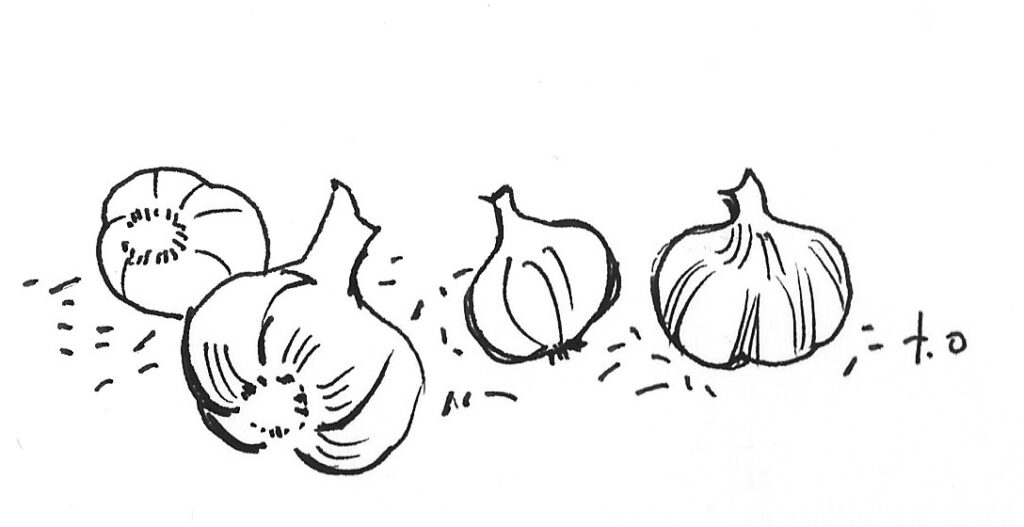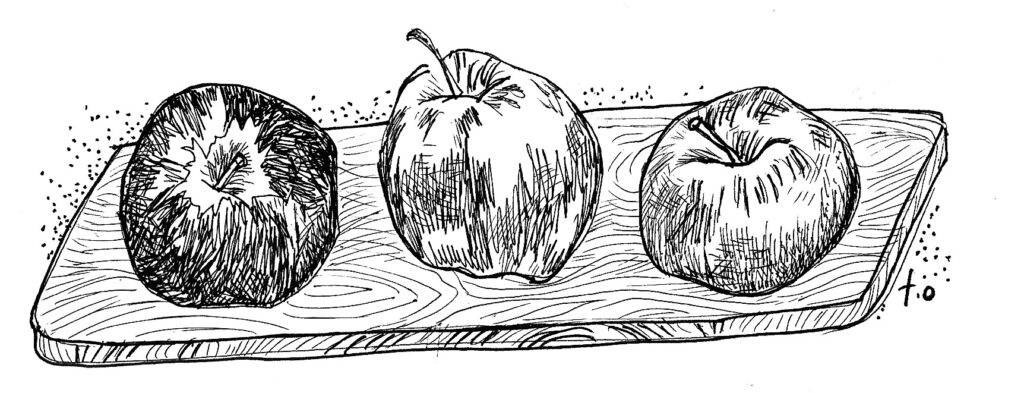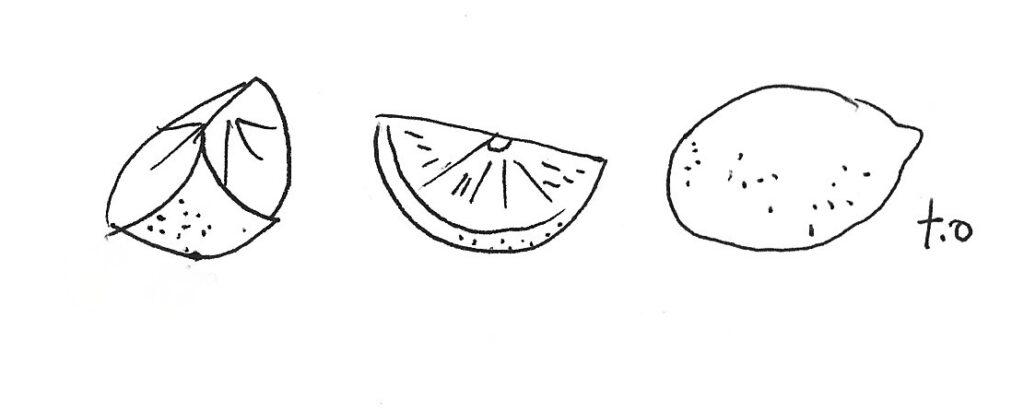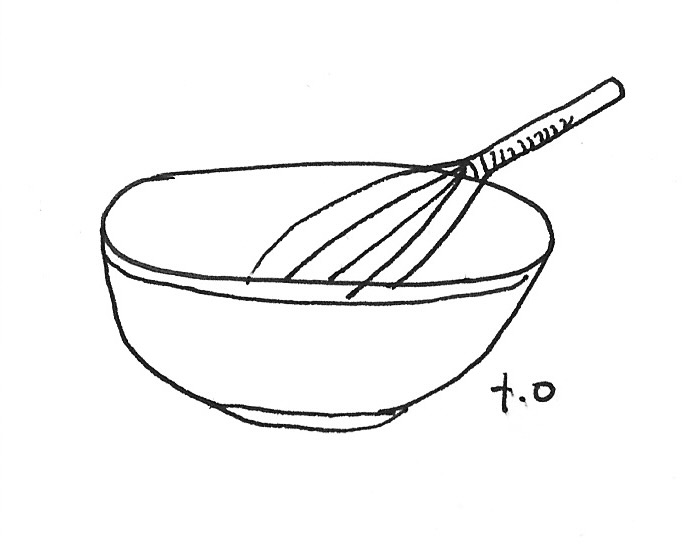By Roberta Bailey
Happy 50th birthday to The Maine Organic Farmer & Gardener. You have grown so much! Look how tall you are now! I see that you have matured into such a refined newspaper! So much poise, such eloquence! You have shared so many voices, so many stories. You have celebrated great news and honored the passing of great farmers and agricultural advocates. You have let us know we were not alone, as we farmed in remote areas. You have taught us so many new ways. You have inspired us to try new farming methods. What a historical record of the organic movement you are. May you live for at least another 50 years.
The year 2024 also marks 40 years that I have written this kitchen column. When I think back to 1984, I remember reading that Deb Soifer was stepping away from writing the column, then called Country Kitchen, and that the paper was looking for a new columnist. Soifer had succeeded Barbara Mather, who wrote a column called Spoons and Spiders. I remember walking back from getting my mail at the post office in town; I lived in northwest Washington County at the time. I saw a clump of asparagus growing next to a roadside telephone pole and knew that my sample column would be about asparagus. I pulled out my manual typewriter that had belonged to my mother, typed out that first column, attached a 20 cent postage stamp and put it in the mail. I was thrilled when I heard that I had the job. Starting pay was 25 dollars.
The MOF&G was published every two months. In a time before email or the internet, the paper was the voice for the organic community. The calendar in the back pages was the way we communicated about upcoming events and chapter meetings. The classified section was an active, necessary way to find essential farm machinery and livestock for sale, farmworkers or house sitters, services available from other farmers, even a few personal ads. I always turned to these back pages first. They were our live feed.
The MOF&G originally listed growers’ supplies, a pre-order that offered soil amendments and cover crop seed. Orders were delivered to local depots, often on farms. MOFGA eventually asked Fedco Seeds to take it on and Organic Growers Supply was born.
I continued to type out the column on my manual typewriter for years. There was no editorial back and forth with then editor Pam Bell. The first I knew of any changes was when the paper arrived in my mailbox.
About 10 years in, Jean English became the editor. I started using a Brother electric typewriter that had a one-page memory. No more whiteout needed. I could copy, cut and paste. A Macintosh PowerBook quickly replaced it. We had the ability to send my articles by email, and with that, the ability to answer questions and ok suggested edits.
As the result of budget juggling, The MOF&G became quarterly. The quarterly calendar became less vital. The world was communicating more quickly in other modes. But the articles remained vital and grounding. We need truthful news about growing and farming and preparing slow foods.
I was deeply saddened in 2020 when Jean English retired as editor. We had such an easy relationship. We would see each other at the Common Ground Country Fair or MOFGA educational events and calmly chat about our lives, and plan out some future articles. I also wrote a column called Grow Your Own back then, featuring a different vegetable each issue.
Later that year, Holli Cederholm became my editor. She and I knew each other. I had been her mentor when she was farmer in residence on the MOFGA farm site. We had traveled together to organic seed conferences in Oregon. We talked books and writers, sharing an affinity for John McPhee’s writings. I was thrilled.
Not long after she started, I noticed that the Word docs that I submitted to her came back to me as Google Docs. So, I made the shift to the more fluid platform.
And here we are, 40 years along, 50 for the paper. My manual typewriter is in the attic. I remain true to my values from those early years as a young back-to-the-lander. I still put up hundreds of jars of canned food and fill four freezers, but also harvest from a high tunnel especially in winter. When The MOF&G arrives in my mailbox, I still read the calendar first, then scan the articles, noting which ones I will read in a quieter moment.
Here is a collection of recipes, the ones that I would choose to serve to The MOF&G at her 50th birthday party.

New Garlic Soup
Makes 2 quarts.
2 quarts vegetable, bone or chicken broth
A few sprigs parsley, thyme and a bay leaf
½ cup semolina pasta
3 green garlic plants (bulbs and stalks), some green parts, all chopped fine
1 cup freshly picked shelled peas or very thinly sliced snap peas
Salt to taste
In a heavy pot, bring the broth and herbs to a boil. Whisk in the semolina and cook about five minutes, until almost tender. Remove the herb sprigs and bay leaf. Stir in the finely chopped garlic. Simmer for 20 minutes, adding the peas in the last minute or two. Adjust salt if needed. Serve hot.
Variations:
Add fresh spinach to each bowl just before ladling in very hot soup.
Add shaved Pecorino or Parmesan cheese to the top of each bowl.
Add a small pat of herbed butter to the top of each bowl of soup.

Baby Turnip-Apple Salad
Serves four.
Blend together:
2 Tbsp. white or dark balsamic vinegar
2 Tbsp. apple cider vinegar
1 tsp. Dijon mustard
4-6 fresh basil leaves
¼ tsp. salt
Slowly whisk or blend in 3 Tbsp. extra virgin olive oil, making an emulsion.
Prepare the salad:
1 tart green apple, cored and thinly chopped
1 sweet red apple, cored and thinly chopped
1-1 ½ cups thinly sliced and matchstick-cut baby turnips, like Hakurei or Oasis
1 cucumber, thinly sliced and quartered
¼ cup grated carrot
Toss all together with dressing. Add fresh pepper or more salt if needed.
Grilled Scallops or Corn on the Cob with Vanilla Butter
Vanilla paired with any grilled meat or vegetables deepens the smoky flavors.
Place scallops on skewers. Grill, turning them until just done. Or, grill ears of fresh corn until done. Brush with vanilla butter and serve.
Vanilla Butter
Makes ½ cup.
½ cup salted butter
¼ tsp. vanilla paste or seeds scraped from half a vanilla bean
½ tsp. black pepper
½ tsp. freshly ground coriander (optional)
Combine ingredients. Use immediately, or store in an airtight container in the fridge for up to four weeks. It can be frozen.

Steamed Asparagus (or Kabocha Squash) with Beer-Pickled Mustard Seeds
Steam trimmed asparagus spears until almost tender. Rinse to cool and set aside. Or, roast or steam cubes of kabocha squash and set aside. Toss with mustard seed mixture.
Beer-Pickled Mustard Seeds
Adapted from “The Flavor Matrix” by James Briscione.
½ cup yellow mustard seed
¼ cup brown mustard seed (or more yellow)
1 cup apple cider vinegar
2 Tbsp. maple syrup or honey
1 tsp. sea salt
½ cup pale ale
Cayenne pepper or a thin slice of a serrano pepper (optional, if heat is desired)
Place the mustard seeds in a small saucepan and cover with cold water. Bring to a boil. Remove from the heat and use a sieve to drain immediately. Rinse the seeds in cold water. Repeat this process a total of three times.
Return the rinsed mustard seeds to the saucepan and add the vinegar, maple syrup, salt and hot pepper if desired. Bring to a simmer, then set aside to cool, stirring occasionally. Once cooled, add the pale ale. Adjust the salt.
Store mixture in a jar. Ideally use after 24 hours, but it can be used immediately.

Custardy Lemon Cake
4 large eggs, separated
1 tsp. lemon zest
⅓ cup fresh lemon juice
1 Tbsp. butter, melted
1 cup. evaporated cane juice or sugar
½ cup white flour
¼ tsp. salt
1 ½ cups whole milk
In a large bowl, whisk together the egg yolks, zest, lemon juice and melted butter. In a separate bowl, mix together the flour, salt, and evaporated cane juice or sugar. Whisk half the flour mixture into the egg yolks, then half of the milk. Whisk in the remaining flour and then the remaining milk.
Whip the egg whites until soft peaks form, then gently fold them into the batter. Pour the batter into a buttered 8-inch square or round baking dish, or Bundt pan.
Heat the oven to 350 degrees F and place a large roasting pan filled halfway with water in the center of the oven.
Once the oven is well-heated, place the cake dish in the pan of water in the oven. Bake about 45 minutes, or until the cake is set.

This article was originally published in the spring 2024 issue of The Maine Organic Farmer & Gardener.
